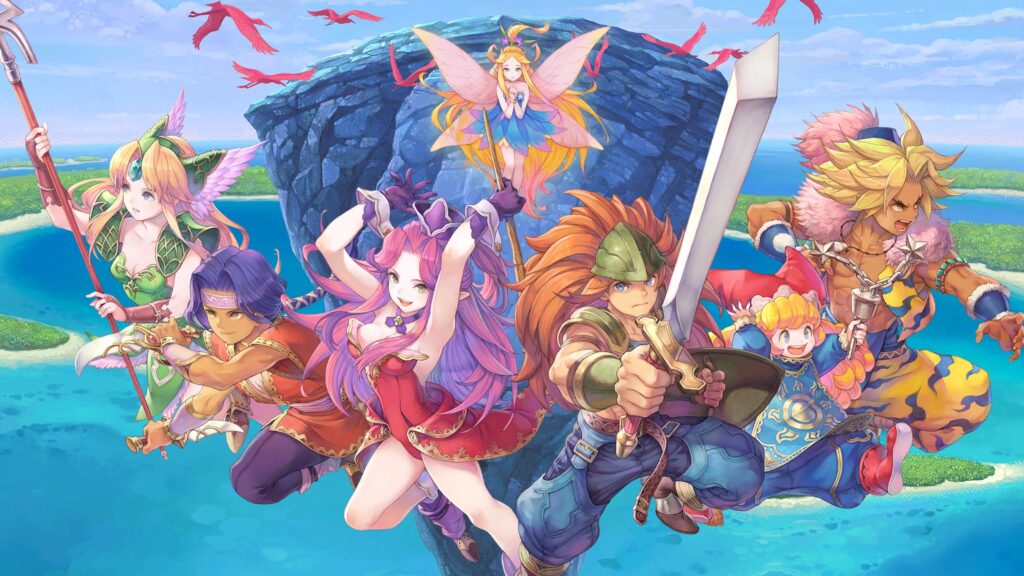
When it was known as Seiken Densetsu 3, Trials of Mana was one of the few big elusive Squaresoft RPGs that never left Japan. Localizing it was a low priority, since the Nintendo 64 was less than a year away and the PlayStation was already out. It came too late, and the west would have to wait until the 2019 Collection of Mana compilation to finally play it.
The first two remakes in the Mana trilogy were very rough and low-budget cash-ins. They failed to capture the essence of what made the games so magical in the first place, and lost all their charm. They felt as if a computer designed them and gave newcomers a poor impression of what the original games were like.
In a shocking turn of events, Trials of Mana would be receiving an Unreal Engine 4 remake. Almost everything would get a makeover and be fully realized in 3D ,and the story would play out with voice acted cutscenes. Combat would jump from a basic hack and slash 2D game, to a basic hack-and-slash 3D game with some added refinements.
Trials of Mana
Developer: Xeen
Publisher: Square Enix
Platforms: Windows PC, Nintendo Switch, PlayStation 4 (reviewed)
Release Date: April 24, 2020
Players: 1
Price: $49.99
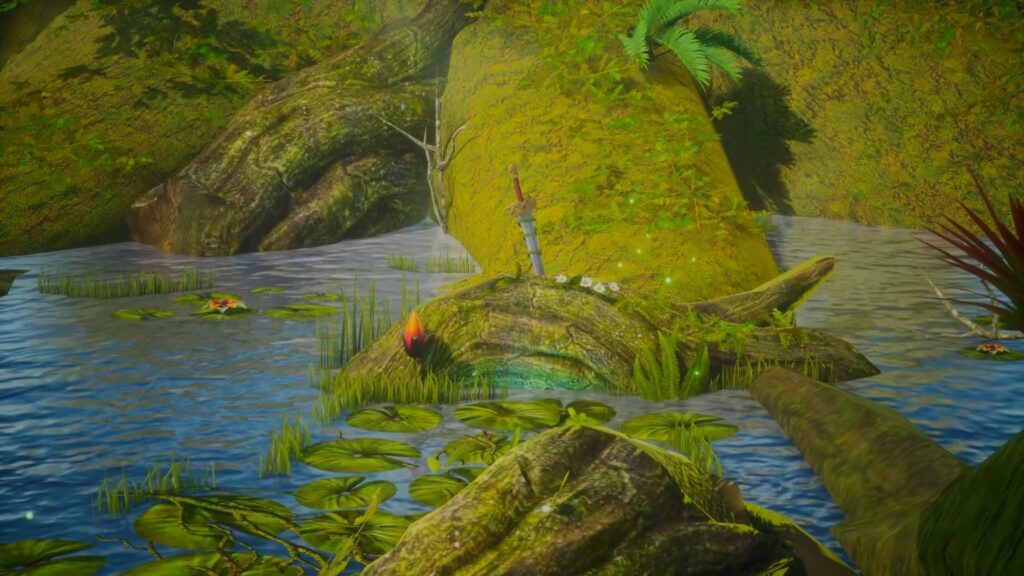
Trials of Mana is about a few heroes with their own stories amidst a plot around the world tree needing to be restored. It’s the kind of simple story you would expect from a 16-bit game, and it is refreshing to see something like it in 2020 and not have an extraneous modern narrative forced into it.
World building is explained by NPCs so that nothing is ever too complex for young gamers to grasp. It invites the player to explore and immerse themselves into the lush and colorful setting. Trials of Mana is often cozy feeling, and the art direction does an admirable job at depicting the style of its indelible original.
There are multiple stories that occur simultaneously during the plot, and there is a choice to see which perspectives to see it play out. Compounded with this is the party combination that is assembled before beginning the game, and this impacts the experience in a big way.

The main story will revolve around the first character picked and the second character will have interactions with that story, but only if they are part of the same pairing. The third character chosen is only there for gameplay purposes, and to round out the party.
Most of the replay value is spent replaying the game as one of the different six protagonists and experiencing their perspective. The main story is lengthy, clocking in at almost 30 hours, and seeing everything from everyone’s perspective adds absurd value since every character has their distinct playstyle.
Between the six heroes are three pairs that have story elements that tie more closely together. Duran and Angela’s stories are paired; as are Kevin and Charlotte, and Riesz and Hawkeye. This is crucial because each pair also functions as a difficulty switch for the boss battles and endgame.
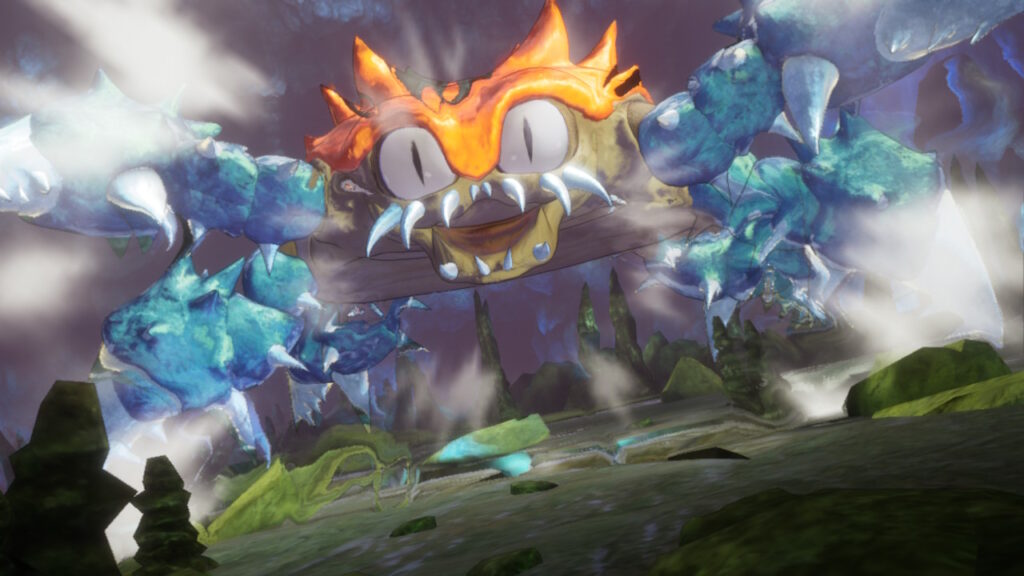
Don’t have the time to replay Trials of Mana six times? The pairing system makes it so gamers can experience most of what the game has to offer. You’ll still miss out on unique dialogue and scenes if you only play through the game once, and it is impressive how much was respected from the original Super Famicom game.
The script is exactly the same as the localization in the one found in the Collection of Mana compilation. The actors that deliver the dialogue range from passable to laughable. There are some key performers who sound utterly bored or uninterested in their line reading, which does not help the lack of expression on characters.
This might have been due to a low production budget, and this is felt deeply through other parts of the game as well. Trials of Mana looks as if it was assembled in an editor made of limited custom assets.
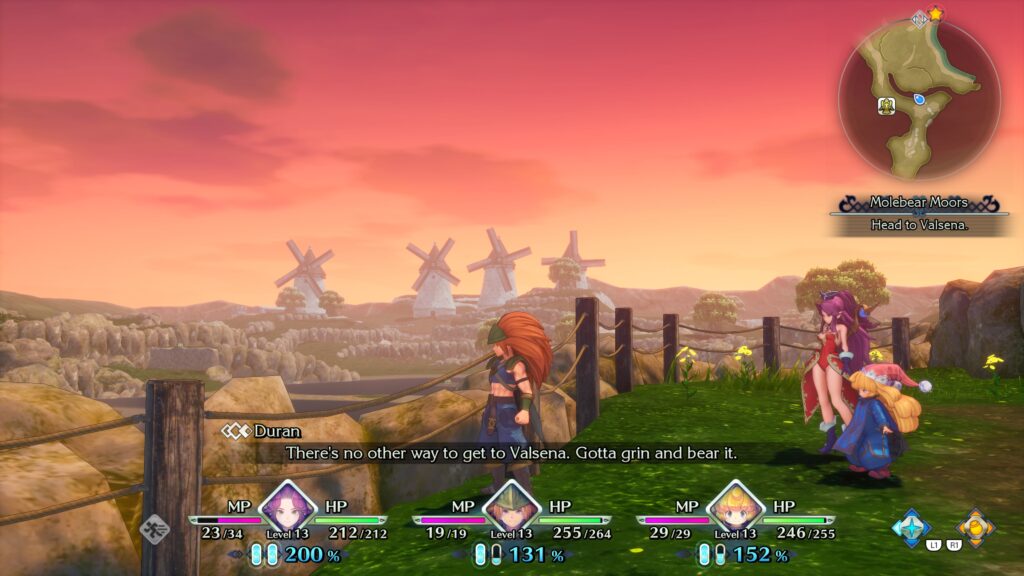
This was forgivable for a 16-bit game programmed in the 1990s, but now Sqaure Enix has much bigger than they ever were and are using Unreal Engine 4. Several room layouts will be burned into your retinas after having seen them in every other dwelling.
Even cutscenes are sloppily constructed and animated, with characters clipping through objects in close-up. These are the kind of flaws that would be excusable for an indie game or something from a much smaller publisher with an experimental game, not something from the biggest publisher in Japan and with a long running beloved series.
Trials of Mana does not always look its best, but it generally is very presentable with how colorful and well designed everything is. Some modeling looks off, like how character’s hair often resembles something molded in plastic, or how the draw distance is surprisingly pretty low.
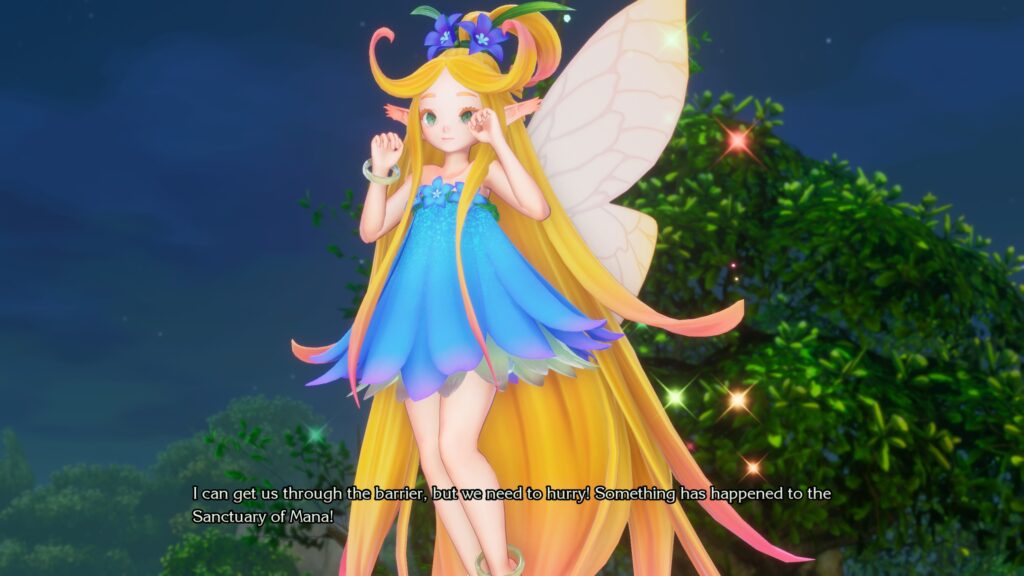
The gameplay is the real hook of the experience, since the pace of the original is maintained, and the scope of the world has not been compromised. Combat is generally straightforward, with enormous boss battles being the headlining experiences that book-end each arc.
Things will get heated, and being able to manage every party member on the fly and directly controlling them at strategic moments will become crucial to survival. Deciding on what items that will go in the item bag, which skills to equip, and making sure the party is rounded out nicely is the heart of Trials of Mana.
Brawls will involve evasion and getting vertical to combat creatures that end up looking like plush toys. The lower difficulty is reflected in the cute art style. Out of combat, heroes will scour vast fields and labyrinths for items and useful equipment. Areas will sometimes loop back to older locations, so progression gives world a sense of place.
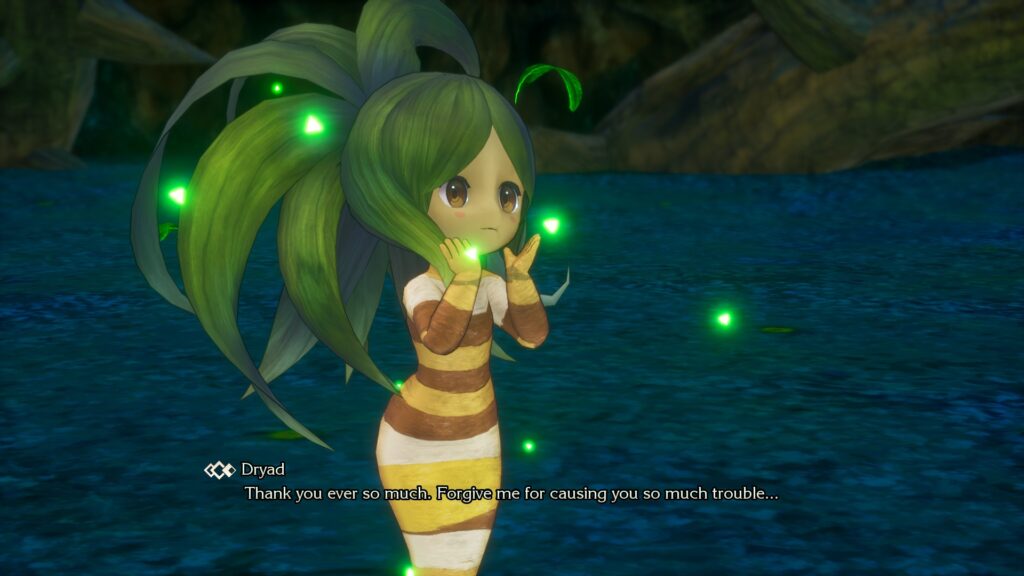
You’re not going to get Devil May Cry 3 levels of combat depth here. Trials of Mana‘s skill-ceiling is roughly in the same ballpark as a Dynasty Warriors game, but with some customization thrown in. What makes it not become tedious is all the exploring and role-playing to be had.
There has been great care to give this remake a very close approximation of the original game’s aesthetics. Most efforts lie in capturing the character designs and using the same earthy color palette. The only disagreeable artistic choice is the mocap that does not fit the character designs, and makes certain races look like theme park costumes.
The music is a standard symphonic interpretation of the Super Famicom original. For those who prefer the warmth and distinct sound of the 16-bit game, there is an option. It is a very catchy and upbeat soundscape, that feels nostalgic and very much a product of its time when game music had to rely on melody.

Trials of Mana is an excellent remake, even if it can’t truly replace the original. It is held back by a low budget and sloppy presentation. It is still highly enjoyable and worth a look, since the gameplay is intact with some added dodge rolling mechanics and hot-key abilities.
The original has a timeless look it because was made during when Squaresoft was at their artistic zenith. This remake looks dated even today and while it is not visually offensive, the graphics fail to impress the same way its progenitor still does.
The core guts may be very similar, but the new coat of paint won’t endure the test of time. The lack of co-op is unfortunate since this was a major selling point for the Mana games, that even the lack luster remake of Secret of Mana was able to retain.
Trials of Mana was reviewed on PlayStation 4 using a review copy provided by Square Enix. You can find additional information about Niche Gamer’s review/ethics policy here.